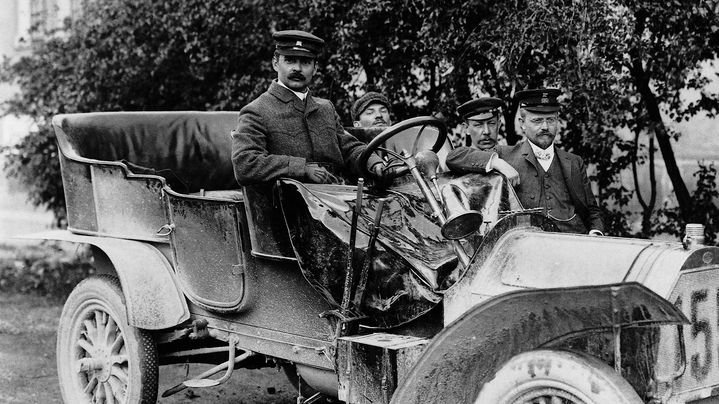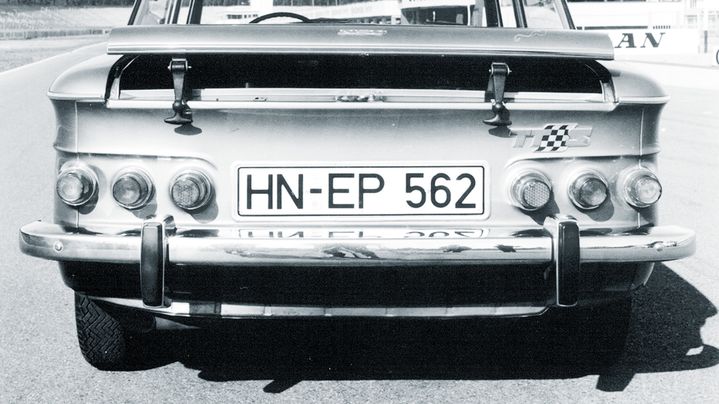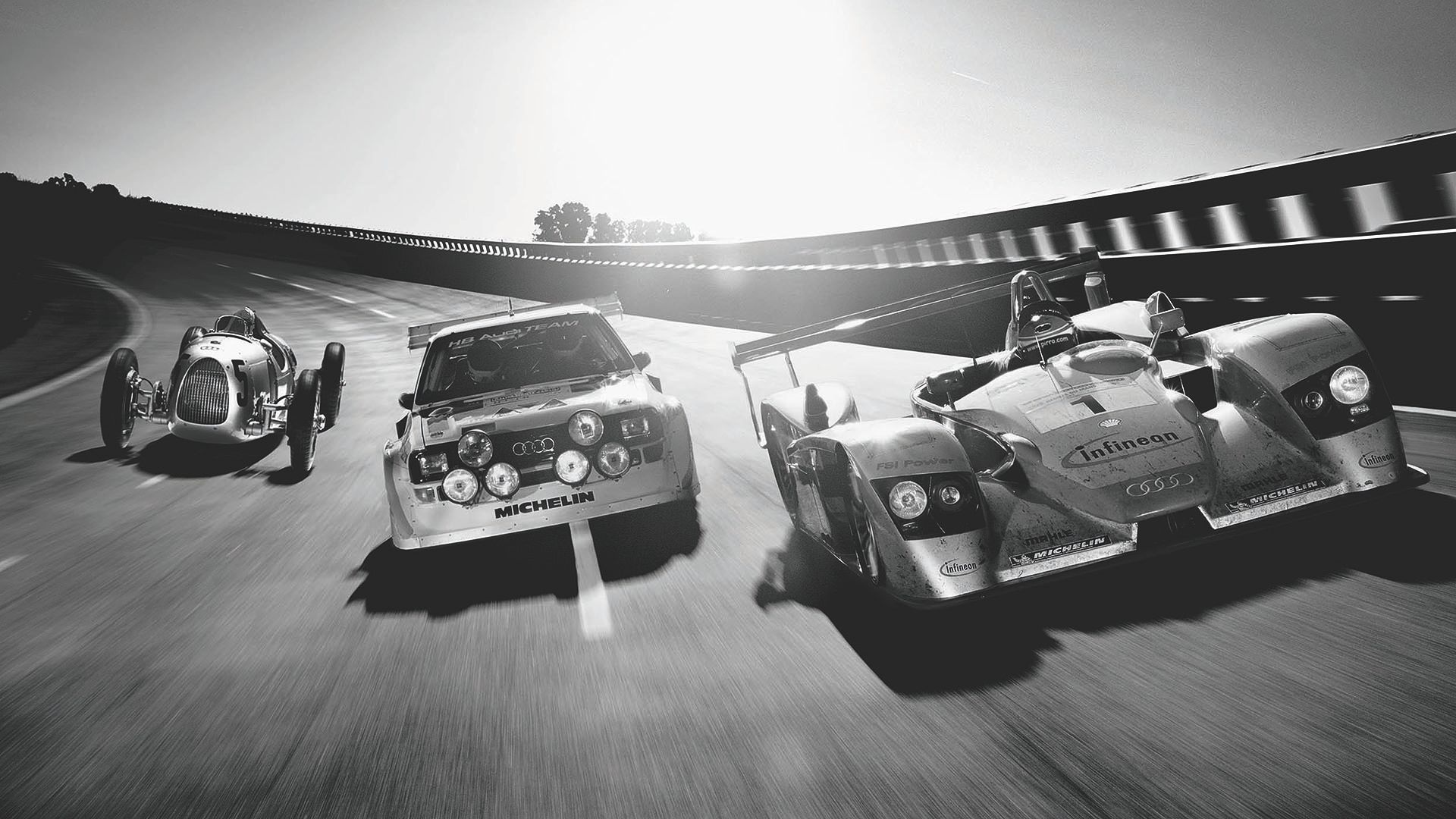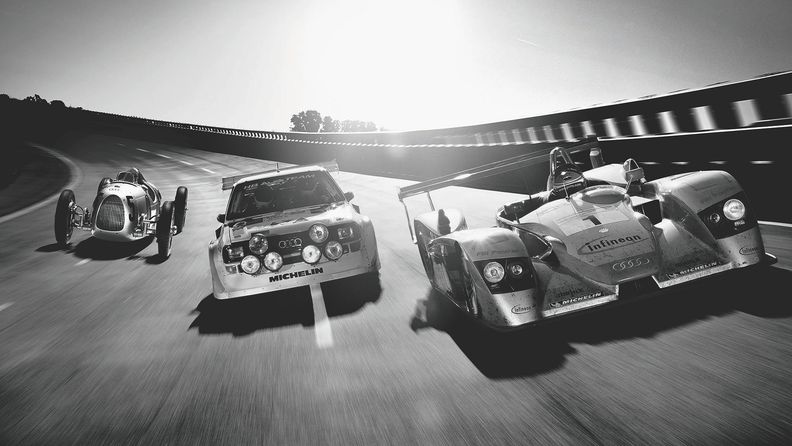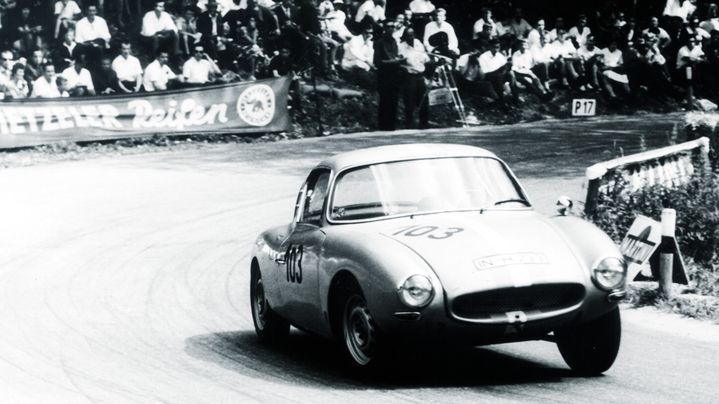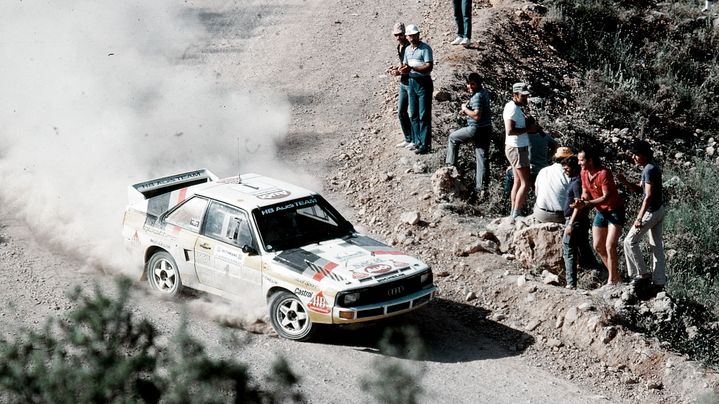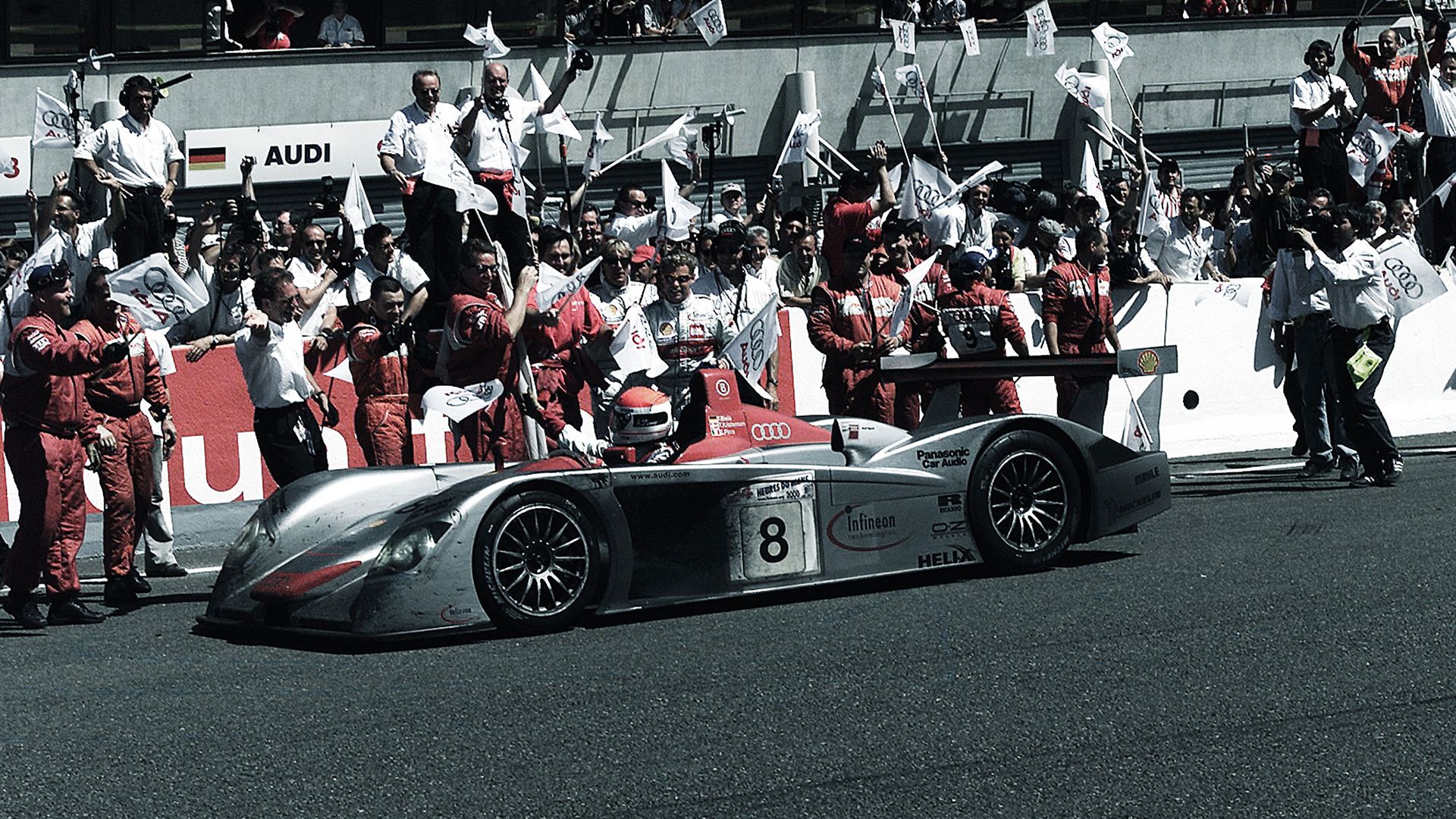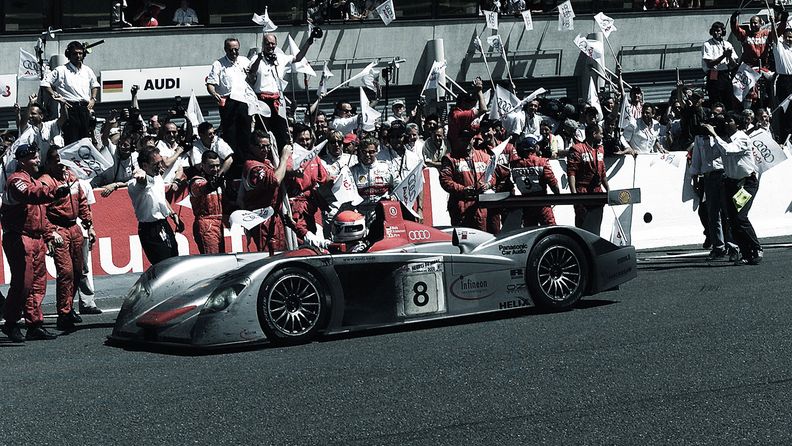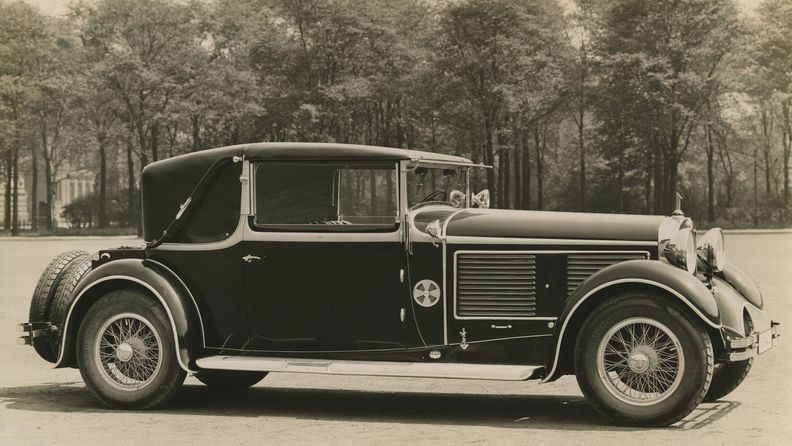
The age of the Silver Arrows
Motor racing appealed to the masses between the wars, particularly the wide range of club competitions and top-class events. It was obvious to everyone that sporting success had a major impact on sales. Following the 1932 merger of Saxony's four automotive companies, Audi, DKW, Horch and Wanderer, it was important to promote the new Auto Union name. In this regard, motor racing offered the ideal platform to endorse the message. Ambition allowed no other choice than to compete at the very highest level: Grand Prix racing.
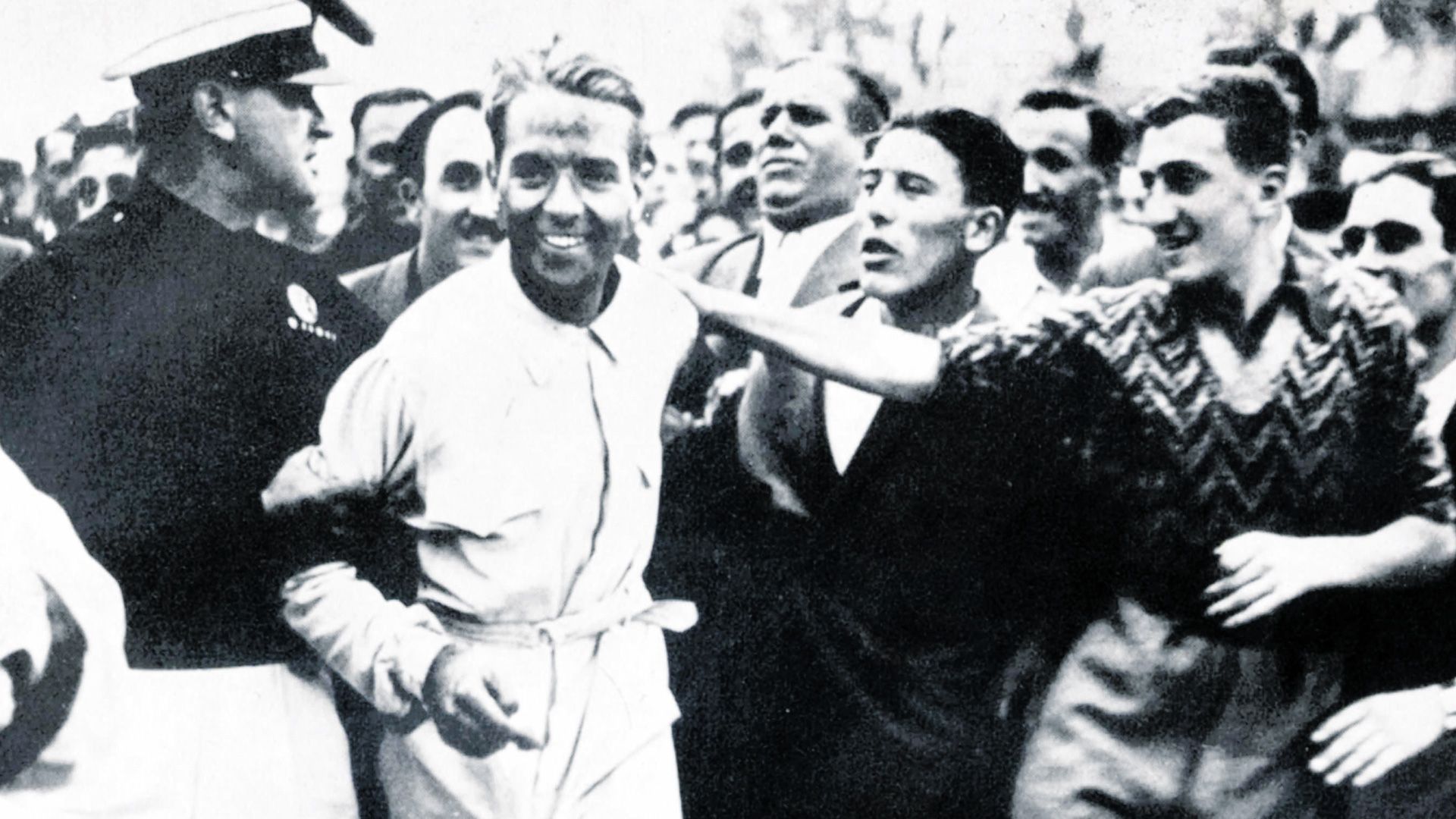
A new start with technical ingenuity
The whole venture took on a new dimension in autumn 1932, when the rules for Grand Prix races from 1934 on were announced. The weight restriction of 750 kg required technical ingenuity: ideal circumstances for a fresh start with a man like Ferdinand Porsche. The most exciting part of his concept was the "rear engine", from today’s perspective a mid-engine, which is still avant-garde to this day. Although this layout was not completely new, it nonetheless seemed exotic and visionary. It eliminated the need for a prop-shaft and meant that the driver could be seated lower, thus ensuring better aerodynamics and a lower centre of gravity. The fact that it demanded a Herculean effort on the part of the driver to cope with the car's unfamiliar handling was quite another matter. The theoretical traction benefits could not be fully exploited with the tyres used at that time.
Other notable technical features were Porsche's torsion-bar front suspension and the car’s lightweight construction, which permitted as large an engine as possible within the constraints of the 750 kg weight limit: a sixteen-cylinder power unit which, in its final version, had a displacement of six litres. From 1934 on, the duel between Mercedes and Auto Union heralded in the golden era of German racing cars. Hans Stuck was initially Auto Union's only leading driver, until Achille Varzi joined him and a young hotshot by the name of Bernd Rosemeyer appeared.
Rosemeyer won a series of races in 1936, and was crowned European Champion – the highest accolade at the time. In addition, he became a legend in his own right thanks to his "hot-blooded temperament" (according to his wife, Elly Beinhorn), which was manifested in his headstrong nature and his supernatural racing instinct: he is reputed to have driven as fast in fog as he did under normal conditions. These qualities not only helped him to beat his colleagues on the racetrack; he also overtook Mercedes' star driver Caracciola – until then the brightest star amongst the media – as the darling of the masses. Rosemeyer's popularity was comparable only to that of the boxer Max Schmeling.
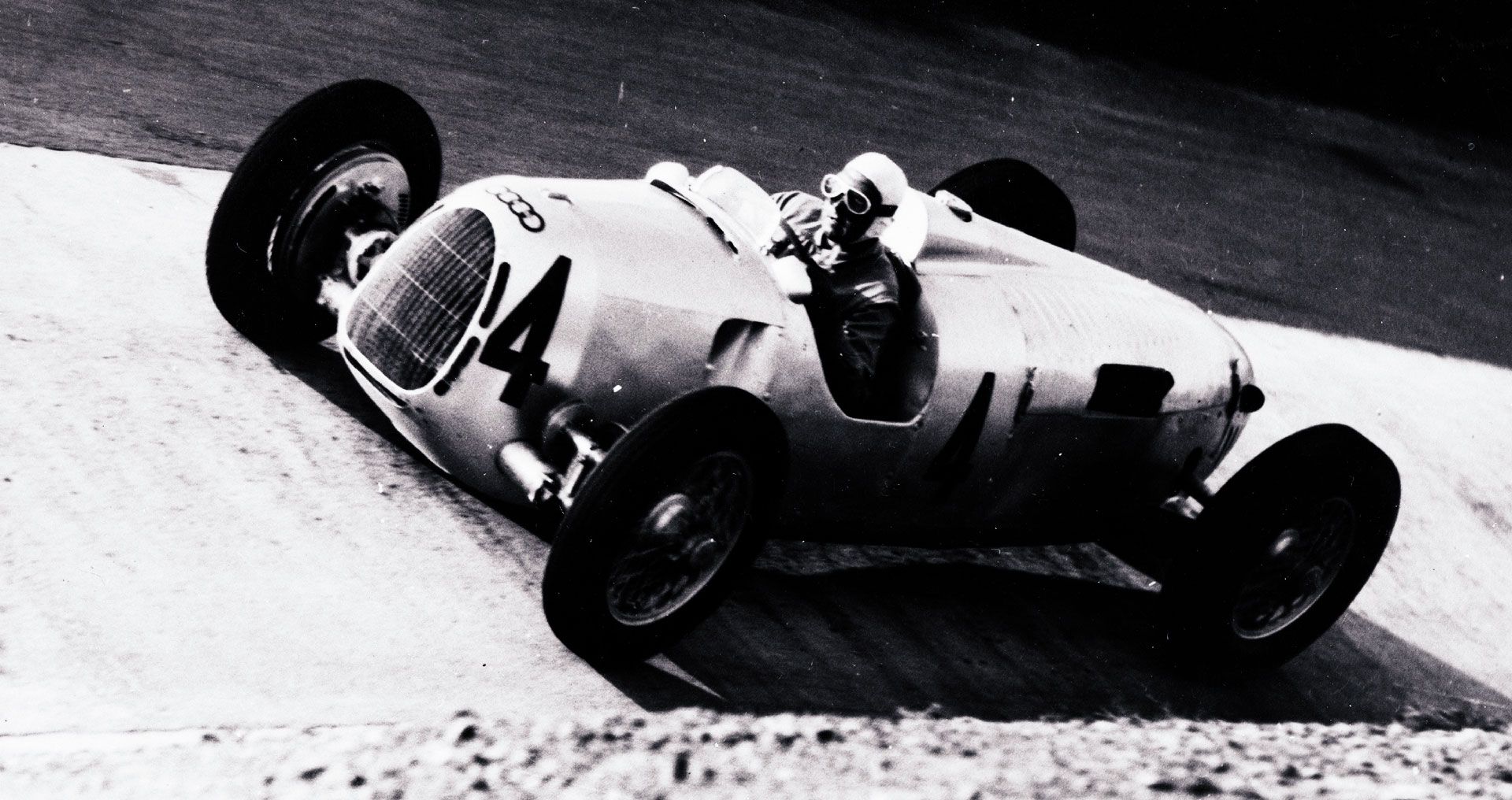
Type C: Enormous grunt from low revs
As the names of successive model generations progressed through the alphabet, the Type C made its appearance. Porsche's basic idea of "enormous grunt from low revs” worked better than ever; the torque of 87 mkg at 2,500 rpm was even more impressive than the peak output of 520 hp. The Type C's top speed was stated as 340 km/h (in the AVUS bodywork, otherwise also over 300 km/h).
World speed records were highly prized during this period. In 1934, Auto Union took up the challenge against Mercedes-Benz and Alfa Romeo, and set at least three dozen new speed records in various classes and categories. This constant pursuit of record-breaking figures boosted Auto Union’s technology, and led to the trauma of January 28, 1938.
The car prepared for the record attempt produced 560 hp. The plan was to take it out on to the Frankfurt – Darmstadt “autobahn” and beat Caracciola’s existing record in a Mercedes of 432.7 km/h. The first run confirmed that the record could be broken. On the second run the car left the road in a cutting near Morsfelden; Bernd Rosemeyer was flung out into the trees and died instantly.
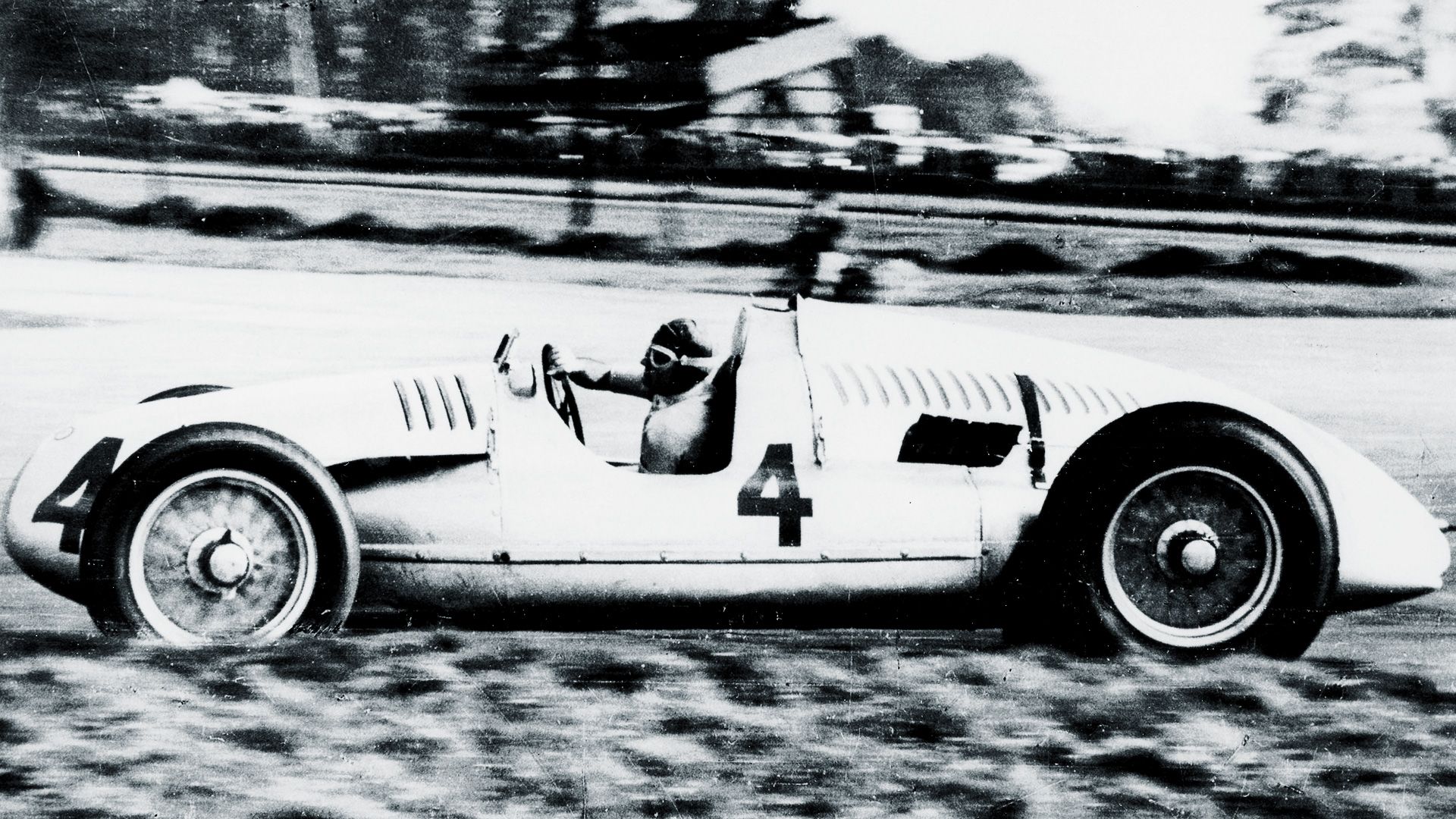
Type D: A most magnificent race car
Without Bernd Rosemeyer and also without technical support from Ferdinand Porsche, Auto Union tackled a new racing formula, effective from the 1938 season. Robert von Eberan-Eberhorst designed a three-litre, twelve-cylinder supercharged engine. The more compact power unit enabled the overall proportions to be improved. The car was stunningly beautiful, without losing its exotic touch.
Tazio Nuvolari and Hans Stuck now vied for the role of the No. 1 driver at Auto Union. Highlights of this period were Nuvolari’s victories in Monza and Donington, and Stuck’s hill-climb successes. On September 3, 1939, Nuvolari won the race in Belgrade – just when war broke out: a grotesque end of an era of racing. These had been years when technology reached new heights and larger-than-life personalities dominated the scene – and when, with sparks of genius, Auto Union built racing cars.
Audi worldwide
Models, products and services – switch to your country / sales region website and discover the regional diversity of Audi.
